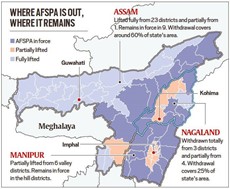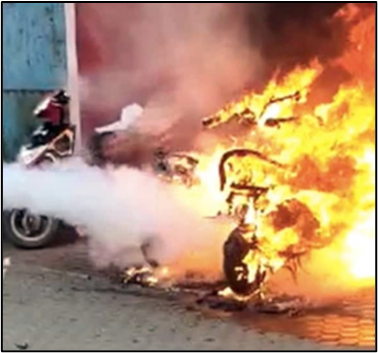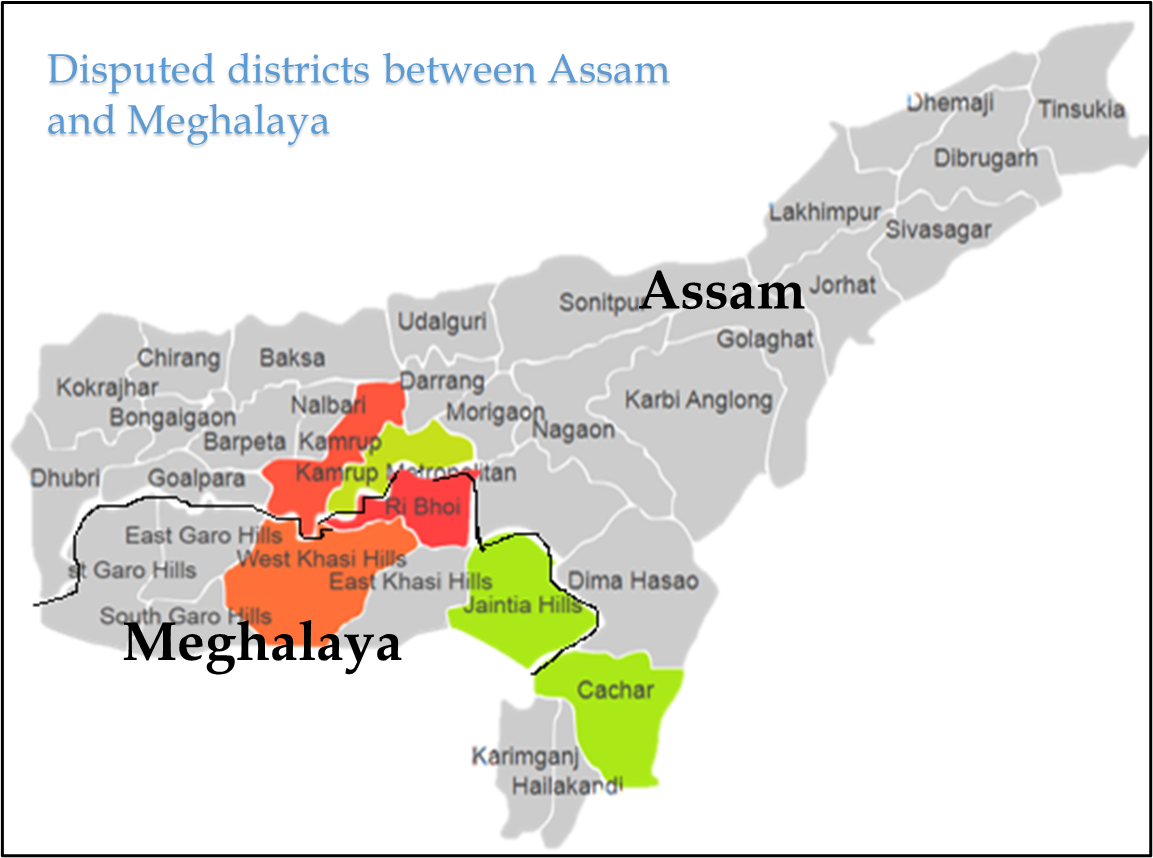Monday, 14th March 2022
Geneva convention on War Crimes
In News
Russian invasion has raised concerns on effectiveness of Geneva Conventions guidelines during wartime.
About the News
- Russia’s armed invasion of Ukraine recently has impacted many civilian infrastructure and non-combatants raising concerns surrounding the issue of human rights violations.
- Corroboration of the allegations of attack on non-combatants and civilian infrastructure has led the ICC to open a war crimes investigation.
- Previously in 2019, Russia had withdrawn its declaration under Article 90 of Protocol 1, which has provision of international Fact-Finding Commission to enquire into allegations by such other Party, as authorized by this Article.
- By withdrawing this declaration, Russia has pre-emptively left itself with the option to refuse access by any international fact-finding missions to Russian entities, individuals or resources that might potentially find Russia responsible for violations of the Geneva Conventions standards.
- The convention has also come under severe attack from various human rights advocacy group including Amnesty International which has raised question of its effectiveness during war-time especially against powerful countries including Russia, USA and China.
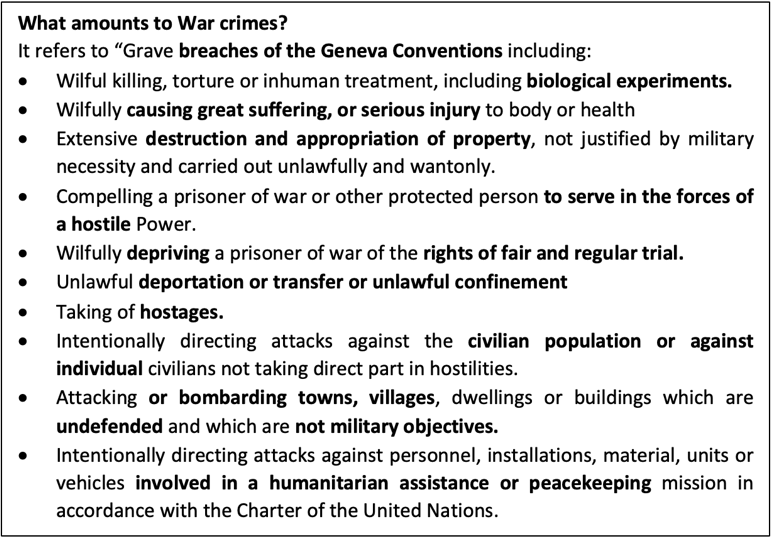
What are important components of Geneva Conventions?
- About: The Geneva Conventions are a set of four treaties, formalised in 1949 which codify widely accepted ethical and legal international standards for humanitarian treatment of those impacted by any ongoing war.
- First Geneva Convention: It protects wounded and sick soldiers on land during war. It also extends to medical and religious personnel, medical units, and medical transport.
-
- Second Geneva Convention: It protects wounded, sick and shipwrecked military personnel at sea during war.
- Third Geneva Convention: It applies to prisoners of war, including a wide range of general protections such as humane treatment, maintenance and equality across prisoners, conditions of captivity
- Fourth Geneva Convention: It mainly concerns with protection of civilians during wartime.
- Additional Protocols of 1977: It expounds upon the general protection of populations against certain consequences of war, the conduct of hostilities and the status and treatment of protected persons, distinguishing between the situation of foreigners on the territory of one of the parties to the conflict and that of civilians in occupied territory.
- Prosecution under the Conventions: Under Article 8 of the Rome Statute of the ICC, it is the ICC that has jurisdiction in respect of war crimes, in particular “when committed as part of a plan or policy or as part of a large-scale commission of war crimes.
- As evidence for investigation: If there is a compelling case for prosecuting combatants for war crimes, evidences are collected for an investigation and trial at the International Criminal Court (ICC).
Sources:
Indian Women in UNPK
In News
More women are joining Indian forces in the UN Peacekeeping , following long-standing calls to boost their presence in international missions.
About UN Peacekeeping
- The United Nations Peacekeeping (UNPK) are employed by the UN to maintain or re-establish peace in an area of armed conflict.
- The UNPK may engage in conflicts between states as well as in struggles within states.
- It acts as an impartial third party in order to prepare the ground for a settlement of the issues that have provoked armed conflict.
- UN Peacekeeping is guided by three basic principles:
- Consent of the parties;
- Impartiality;
- Non-use of force except in self-defence and defence of the mandate.
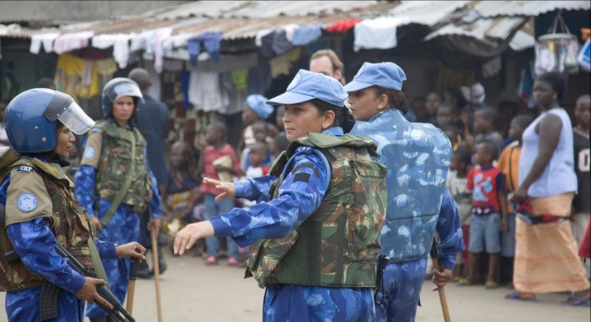
When is UNPK deployed?
- The Peacekeeping Forces are subordinate to the leadership of the United Nations.
- They are normally deployed as a consequence of a Security Council decision. However, on occasion, the initiative has been taken by the General Assembly.
- Operational control belongs to the Secretary-General and his secretariat.
- UNPK operations are called upon to maintain peace and security, to facilitate the political process, protect civilians, assist in the disarmament, demobilization and reintegration of former combatants; support the organization of elections, protect and promote human rights and assist in restoring the rule of law.
- They are divided into:
- Unarmed observer groups: concerned with gathering information for the UN about actual conditions prevailing in an area. e.g., as to whether both parties adhere to an armistice agreement.
- Lightly-armed military forces: only allowed to employ their weapons for self-defence.
Indian Women Participation in UNPK
- In 2007, India became the first country to deploy an all-women contingent to a UN peacekeeping mission providing 24-hour guard duty in the capital of
- The Female Engagement Team (FET) from India comprises 22 women peacekeepers and it began its deployment with Mission in the Democratic Republic of the Congo (MONUSCO), considered one of the most challenging peacekeeping missions under the UN flag.
- India was the first country to contribute to the Secretary-General's Trust Fund for Victims of Sexual Exploitation and Abuse (SEA) and also signed the voluntary compact on SEA with the Secretary-General in 2017.
- The Indian Prime Minister has joined the "Circle of Leadership" on the prevention of and response to sexual exploitation and abuse in United Nations operations.
Why women are being encouraged to join UNPK?
- In conflict-ridden areas, a sizable number of victims are women and children. Women are usually good communicators and can establish a good communication channel with victims of conflict, building trust and confidence.
- They can go deep into the societies, communities and make contact with victims.
- More women in UNPK inspire other women to play a meaningful part in peace and political processes to build inclusive, peaceful and resilient societies.
- In India, a nation that is riddled with gender violence, female police officers joining UNPK are important for breaking stereotypes and to represent their country on the world stage.
Sources:
Strengthening of Pharmaceutical Industry (SPI) scheme
In News
The Department of Pharmaceuticals, Ministry of Chemicals and Fertilizers has recently released guidelines for 'Strengthening of Pharmaceutical Industry (SPI)' scheme.
About the news
- The scheme has been assigned an outlay of ₹500 crore for the period from fiscal FY 21-22 to FY 25-26.
- This is to address the rising demand in terms of support required to existing Pharma clusters and MSMEs across the country to improve their productivity, quality and sustainability.
- This will strengthen the existing infrastructure facilities and will make India a global leader in the Pharma Sector.
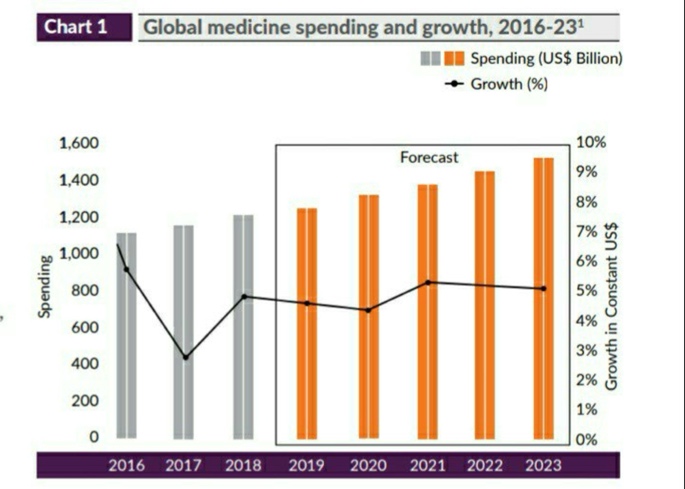
Understanding the Scheme
- Ensures Quality and sustainable growth of clusters: Financial assistance to pharma clusters would be provided for the creation of Common Facilities. This will improve both the quality and ensures the sustainable growth of clusters.
- Interest subvention for upgradation: In order to upgrade the production facilities of SMEs and MSMEs to meet national and international regulatory standards, interest subvention or capital subsidy on their capital loans will be provided which will further facilitate the growth in volumes as well as in quality.
- Components of the Scheme: The scheme has 3 components/sub-schemes:
- Assistance to Pharmaceutical Industry for Common Facilities (APICF): to strengthen the existing pharmaceutical clusters’ capacity for their sustained growth by creating common facilities.
- The common facilities will be created with the focus on R&D Labs, Testing Laboratories, Effluent Treatment Plants, Logistic Centres and Training Centres in this order of priority
- Pharmaceutical Technology Upgradation Assistance Scheme (PTUAS): to facilitate MSMEs of a proven track record to meet national and international regulatory standards.
- In the PTUAS sub-scheme, support for SME Industries is proposed, either through up to a maximum of 5% per annum (6% in case of units owned and managed by SC/STs) of interest subvention or through Credit linked Capital subsidy of 10%.
- Pharmaceutical & Medical Devices Promotion and Development Scheme (PMPDS): to facilitate growth and development of Pharmaceutical and Medical Devices Sectors through study/survey reports, awareness programs, creation of database, and promotion of industry.
- Under this, knowledge and awareness about the Pharmaceutical and MedTech Industry will be promoted by undertaking studies, building databases and bringing industry leaders, academia and policymakers together to share their knowledge and experience for the overall development of the Pharma and Medical Devices sector.
- Assistance to Pharmaceutical Industry for Common Facilities (APICF): to strengthen the existing pharmaceutical clusters’ capacity for their sustained growth by creating common facilities.
Source:
- Govt releases norms for strengthening of pharma industry scheme; Key highlights
- Janaushadhi Kendras to offer big discounts and nutraceuticals products to customers
Image source:
Pi Day
On March 14 Pi Day is observed since 3, 1, and 4 are the first three significant figures of π. Pi, the ratio of any circle's circumference to its diameter, is one of the world's oldest and most well-known mathematical constants. It has a value of about 3.14159265. It is an irrational number, meaning that it cannot be stated as a ratio of whole numbers and that its decimal representation never stops or repeats. Archimedes of Syracuse, one of the greatest mathematicians of the ancient world, was the first to compute the value of Pi. However, it was initially given the name Greek letter by William Oughtred in a book published in 1647, and it was later adopted by the scientific community when Leonhard Euler used the sign in 1737. Celebrations of Pi day often involve eating pie or holding pi recitation competitions.

Source:
UNEP Frontiers 2022 report: Noise, Blazes and Mismatches
In News
The United Nations Environment Programme (UNEP) Annual Frontiers Report 2022: Noise, Blazes and Mismatches: Emerging Issues of Environmental Concern, has been recently released.
About the Frontiers Report
- The Frontiers Report identifies and offers solutions to three environmental issues that merit attention and action from governments and the public at large.
- Noise, Blazes and Mismatches: Emerging Issues of Environmental Concern, the sixth report, draws attention to emerging environmental concerns with the potential to wreak regional or global havoc, if not addressed early.
- Urban noise pollution, wildfires and phenological shifts – the three topics of this Frontiers Report – are issues that highlight the urgent need to address the triple planetary crisis of climate change, pollution and biodiversity loss.
Key Findings of the Report
Listening to cities: From noisy environments to positive soundscapes
The definition of noise as unwanted sound implies a psychological concept. It is becoming more relevant to consider soundscapes that contribute to people’s physical as well as psychological well-being, especially in the urban environment.
The International Organization for Standardization (ISO) defines a soundscape as “[the] acoustic environment as perceived or experienced and/or understood by a person or people, in context”.
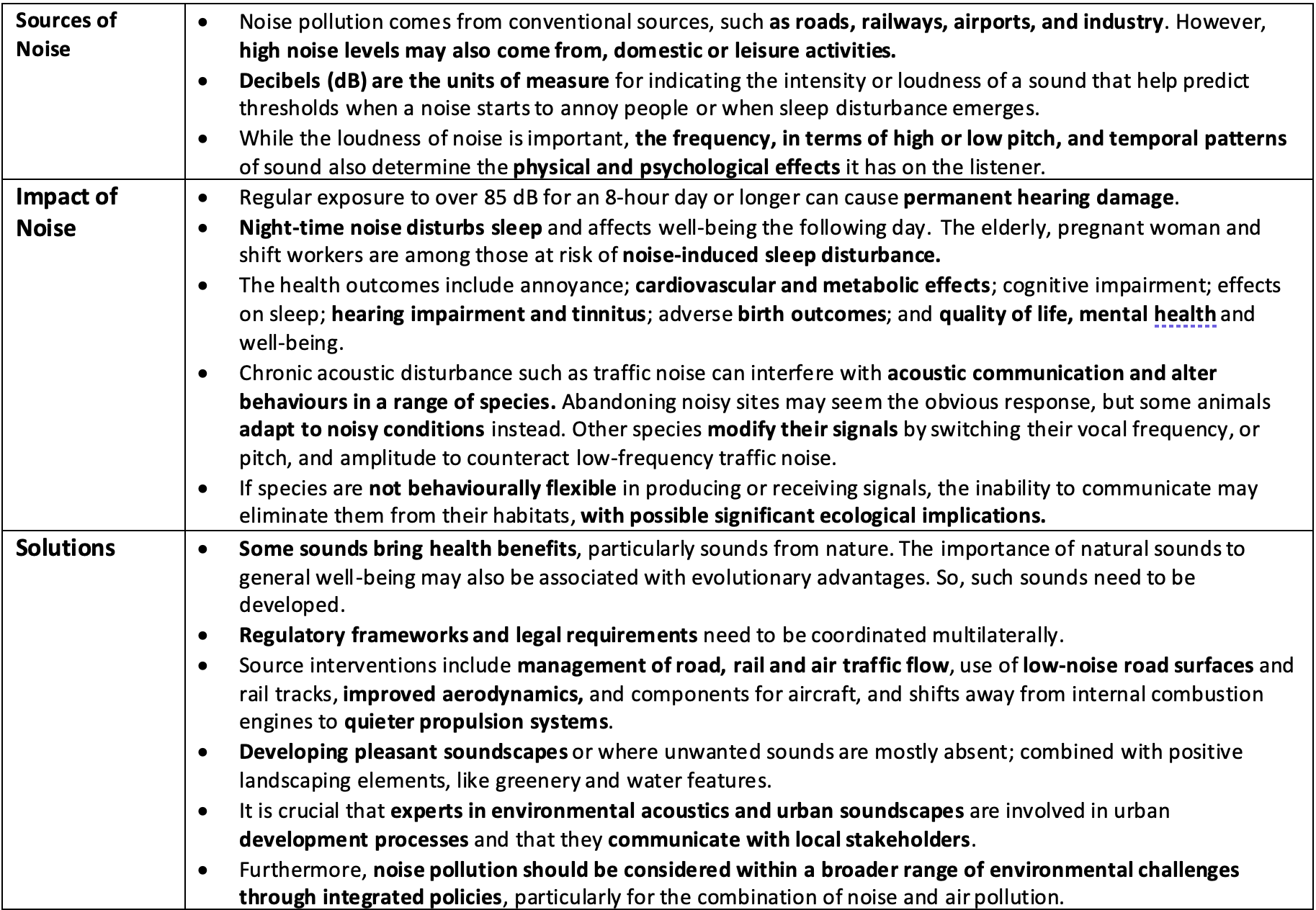
Wildfires under climate change: A burning issue
- What is a wildfire?: A wildfire is a free-burning vegetation fire, including fires that can pose significant risk to social, economic, or environmental values. It may be started maliciously, accidentally, or through natural means. Wildfires are a natural feature of the Earth system, necessary for the functioning of many ecosystems.
- Fire Regime: Interactions between vegetation and climate over extended periods establish a particular pattern of wildfire recurrence in a defined ecosystem, known as its fire regime. The attributes of a fire regime include frequency, burn extent, intensity, severity and seasonality.
- Wildfire and ecosystems: Wildfires play a key role in maintaining ecological functions and biodiversity. For instance, some plants need recurring fires to trigger germination and burn off competing vegetation. Any change in fire regime can impact both species and ecosystem as a whole.
- Types of wildfires: Depending on biomass fuel and weather conditions, there are three types of wildfire. A single fire event may exhibit all or a combination of these three fire types.
- Crown fires: These ascend from ground to tree crown and can spread through the forest canopy. Spread generally requires heavy fuel loads and strong winds.
- Surface fires: These burn through leaf litter, dead material and vegetation on the ground. Surface fires can spread vertically by igniting bushes and shrubs to become crown fires.
- Ground Fires: These burn decomposed organic subsurface layers of soil and usually do not produce visible flames. Difficult to fully suppress, ground fires can smoulder over winter and may re-emerge in spring.
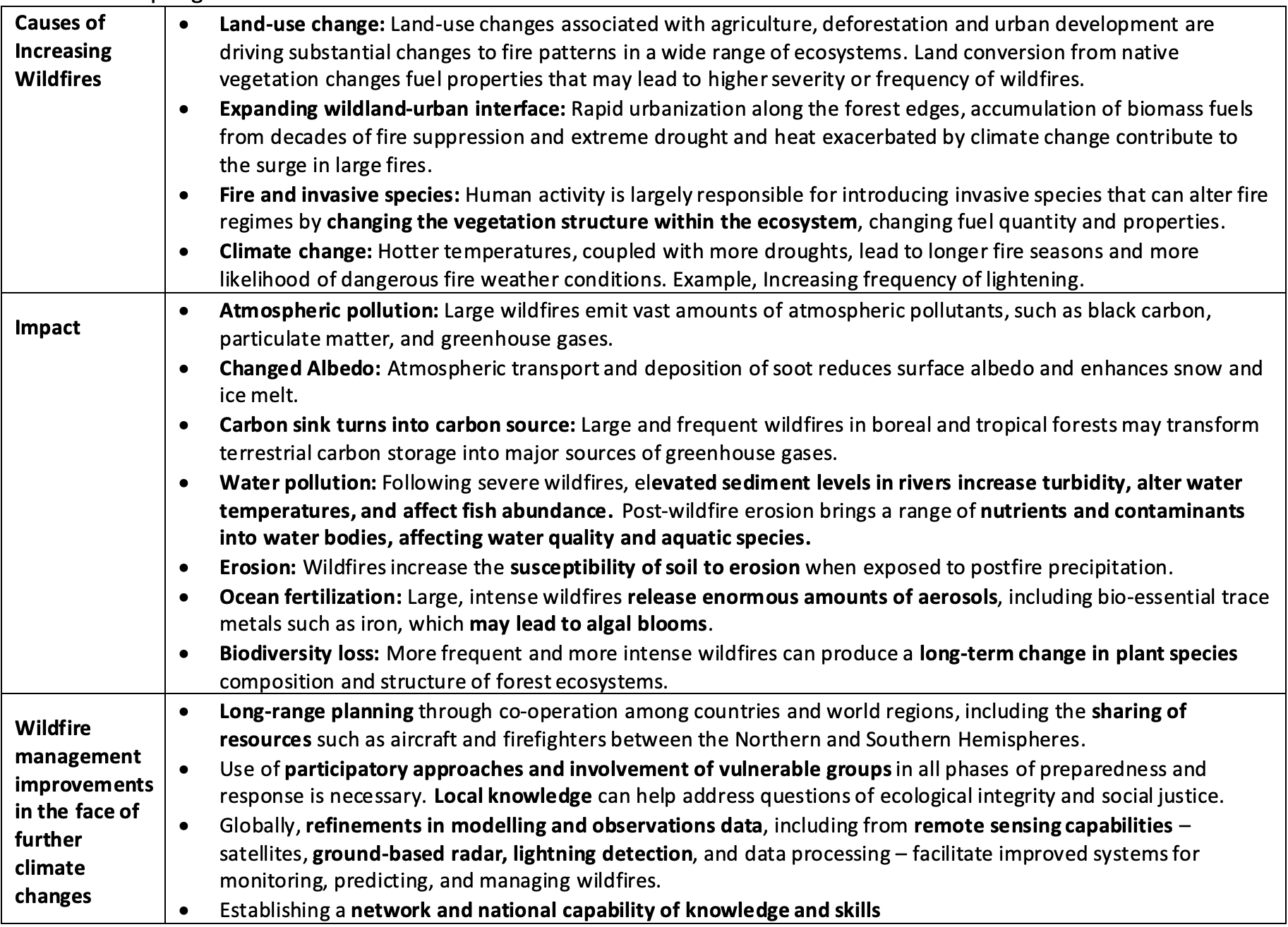
Phenology: Climate change is shifting the rhythm of nature
Phenology examines the timing of recurring life-cycle stages, driven by environmental forces, and how interacting species respond to changes in timing within an ecosystem. Plants and animals often use temperature, daylength, the arrival of rains, or other physical changes as cues for the next stage in their seasonal cycle.
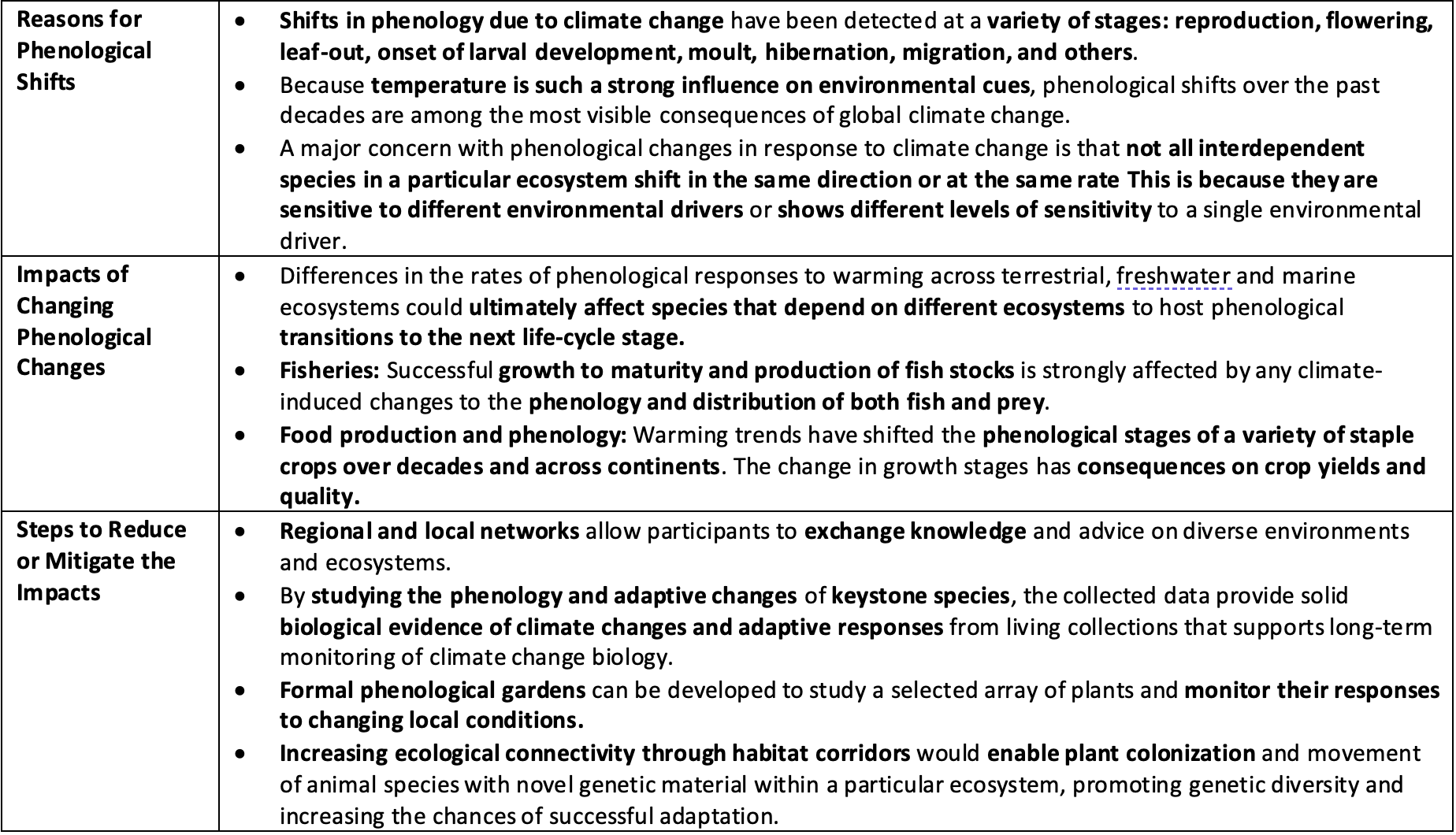
Source:
The Museum of the Future
This is image of the Museum of the Future in Dubai, which was recently thrown open to the public. The museum takes the visitors on an experiential journey, transporting them to the year 2071, to coincide with the centenary of the founding of the UAE. The museum reportedly will act as an incubator for scientists, thinkers and researchers to bring their bold ideas and visions of the future to life. The seven-storey, pillar-less structure, spanning an area of 30,000 sq m is an engineering marvel. It has no sharp corners in its outer structure. Its stainless-steel facade is decorated with inspirational quotes in Arabic calligraphy. It is fed with 4,000 megawatts of electricity that is produced through solar energy using solar panels. It employs the latest technologies in virtual and augmented reality, big data analysis, artificial intelligence and human machine interaction to answer many questions related to the future of humanity, cities, societies and life on Earth, all the way to outer space.
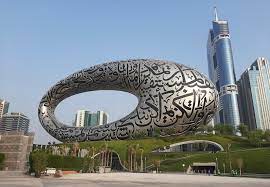
Source:
QR code-based GI-tag
- Context: The first ever consignment of QR based GI-tagged carpetswas exported to Germany from New Delhi recently.
- The Jammu and Kashmir’s GI tagged carpets will now come with a quick response (QR) code.
- The code will help in reviving the sheen and glory of the Kashmiri carpet industry by certifying the genuineness of the hand-knotted carpets with relevant information of the manufacturer, weaver, district, raw material
- This innovation will help in preserving the quality of hand-knotted carpets that will eventually boost exports as they would be treated at par with the quality/price of Iranian and Turkish hand-knotted carpets.
- The QR code label cannot be copied or misused which will discourage the counterfeit production of carpets that has been costing both the livelihood of the weavers’ community and the industry.
- Kashmir carpets have intricate designs that are primarily oriental, floral style in a range of colors, sizes and quality that are handmade, hand-knotted, and are primarily made using pure wool, pure silk and occasionally wool and silk blends.
- The Geographical Indication Registry of the Department of Industry Promotion and Internal Trade, Ministry of Commerce and Industry granted GI tag to Kashmiri carpets in
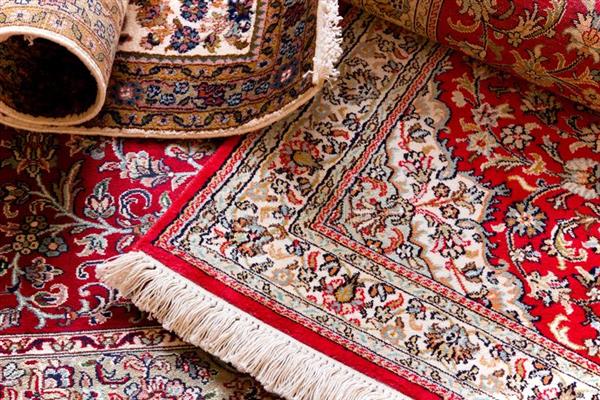
Source:
- First ever GI-tagged Kashmir carpets flagged off to Germany
- QR code-based GI tag to discourage counterfeit production of Kashmiri carpets
Image source:
NSA Security Conclave
- Context: The fifth National Security Adviser-level meeting of the Colombo Security Conclave was held in Maldives recently.
- The Conclave comprised of India, Sri Lanka, and the Maldives. Mauritius was included as the fourth member while Bangladesh and Seychelles participated as observers.
- The meeting discussed:
- The significance of close cooperation between member and observer countries in maritime safety and security and countering terrorism and radicalization.
- Countering narcotics trafficking and transnational organised crime and cyber security and emerging technologies.
- Their role of the first responders for the region as maritime nations and close maritime neighbours.
- It was earlier called the Trilateral for Maritime Security Cooperation and was later renamed as the Colombo Security Conclave following which a permanent Secretariat was established in
- The secretariat coordinates all activities of the conclave and is also responsible for the implementation of the decisions taken at the NSA level.
- The next meeting of the Conclave is scheduled to be held in
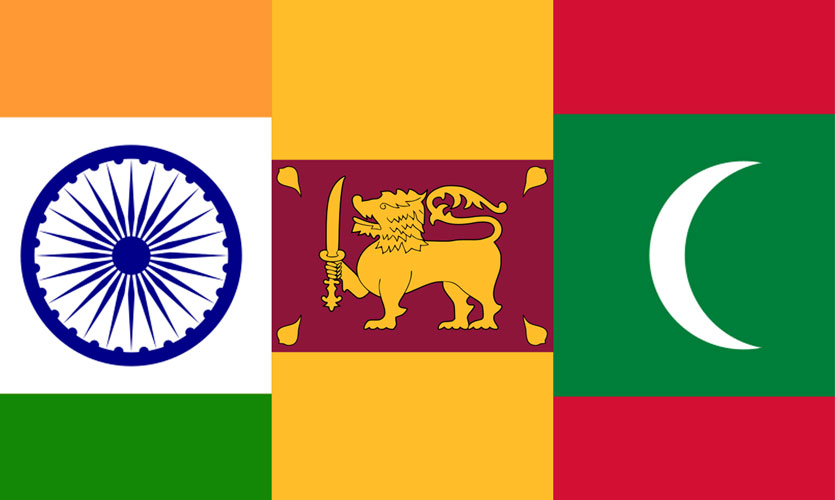
Source:
- NSAs at Colombo Security Conclave agree on role as first responders for security in Indo-Pacific region
- Colombo Security Conclave adopts road map to enhance and strengthen regional security
Image source:
Biological and Toxin Weapons Convention
- Context: India has said that any matters relating to obligations under the Biological and Toxin Weapons Convention (BWC) should be addressed through consultation and cooperation between the parties concerned.
- This comes as a response to Russia’s call for a Security Council meeting on the issue of biological laboratories in Ukraine.
- Formally known as “The Convention on the Prohibition of the Development, Production and Stockpiling of Bacteriological (Biological) and Toxin Weapons and on their Destruction”, BWC was negotiated by the Conference of the Committee on Disarmament in Geneva, Switzerland.
- It opened for signature in 1972 and entered into force in
- It supplements the 1925 Geneva Protocol, which had prohibited only the use of biological weapons.
- BWC effectively prohibits the development, production, acquisition, transfer, stockpiling and use of biological and toxin weapons.
- It was the first multilateral disarmament treaty banning an entire category of weapons of mass destruction (WMD).
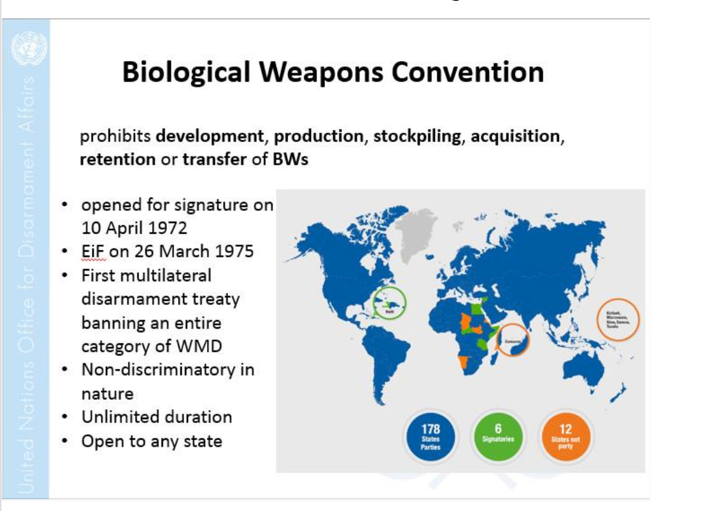
Source:
- Matters Relating to 'Biological and Toxin Weapons Convention' Must Be Addressed Through Consultation: India
- Biological Weapons Convention
Image source:
Away From Reactor’ (AFR) Facility
- Context: The Kudankulam Village Panchayat has recently adopted a resolution against AFR facility.
- All nuclear power stations in operation in India and other countries have facilities to store new as well as spent (used) fuel.
- The storage of spent fuel in a nuclear power plant has two-fold -one facility is located within the reactor building/service building, known as the spent fuel storage pool/bay, and the other is located away from the reactor, called the Away From Reactor (AFR) Spent Fuel Storage Facility, but within the plant’s premises.
- The spent fuel storage pool inside the reactor building has a limited capacity and is used for immediate storage of the spent fuel removed from the reactor during refuelling.
- The fuel remains in the pool initially for a few years for it to be cooled sufficiently before it is shifted to the facility.
- The AFR Spent Fuel Storage Facility is functionally similar to the this except in terms of capacity and that its design is specific to fuel type.
- The AFR Spent Fuel Storage Facility is not needed from day one and can be constructed as and when a need arises.
- There are two AFRs in operation at Tarapur near Mumbai in Maharashtra and one at Rawatbhata near Kota in Rajasthan.
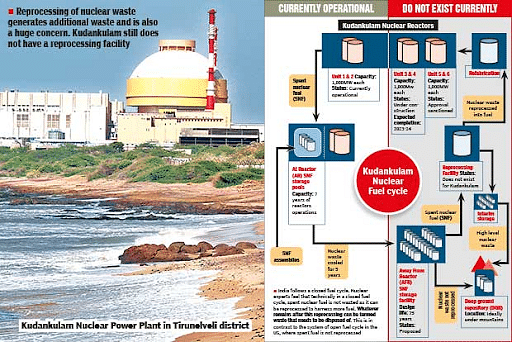
Source:
- Kudankulam Village Panchayat adopts resolution against AFR facility
- ‘Away-From-Reactor facility safe’
Image source:
The world is in flux. Self-reliance is vital: ORF
Essence: As per the author, China faceoff with India in Ladakh, USA`s decision to pull troops out of Afghanistan and Russia`s invasion of Ukraine have challenged India’s engagement with the world and its security concerns. This has confronted India with questions such as the meaning of strategic autonomy and what is expected of India to be done by its partners and its own economic and security concerns.
As per the author, post-war assumptions are not buried and the world is witnessing weaponization of everything such as components for vaccine packaging, energy and gas grids, SWIFT system, etc. Thus, the call for Aatmanirbharta gained more prominence now. Achieving self-reliance requires more connectivity, diversified sources of materials and components and resilient financial and trading arrangements.
Why should you read this article?
- To know about the geopolitical developments that challenged India’s engagements with the world.
- To know about the recent changes in the global rules of engagement.
- To know about the importance ofAatmanirbharta and what needs to be done to achieve.
Source:
Inching towards an IOR security net: ORF
Essence: The editorial talks about the extended maritime and security cooperation in Indian ocean region and its participants. With the induction of Mauritius, the zone of security net would expand. However, the political oppositions in Maldives, civil strife in Sri Lanka, bilateral issues between SAARC nations and China’s interferences have played a role in diluting the agenda of IOR.
Nations must resolve to put efforts towards traditional security and newer areas of challenges like ocean pollution, humanitarian aid, etc.
India has previously helped Bangladesh during cyclonic storms, Nepal during earthquake, Maldives during coup, etc. India could start taking support of Mauritius, Seychelles, Madagascar, French Reunion, Comoros Islands and Diego Garcia being a part of IOR. Associations might help India counter the challenge of human and technical resources to provide security and overcoming fractured political tendencies in certain countries.
Why should you read this article?
- To know the political stakeholders in Indian ocean region.
- To understand India’s leadership in providing holistic security in its neighborhood.
Source:
Ukraine invasion, global wheat supply and India’s opportunity: IE
Essence: Ukraine’s invasion has disrupted global wheat supply since both Russia and Ukraine are major exporters of wheat. Stock of wheat with Food Corporation of India (FCI) is well above the buffer stock norm. This provides India with an opportunity to fill the vacuum in the global wheat market.
However, to make the best of this opportunity, India should build an ecosystem where Private players will have the opportunity to buy wheat at competitive prices from the domestic market and export. India needs to reform its MSP and PDS system for this to happen.
Why should you read this article?
- To understand the economic opportunity provided to India by this unfortunate Russian invasion of Ukraine.
- To understand roadblocks to increasing wheat export from India.
Source:
Not a very regular school!
Background
Every child is born with some unique capabilities and sometimes these may not be suitable to regular schooling systems.
How a different school is helping these children?
- Dr Bhuvana Vasudevan from Puducherry has been in teaching profession, where she noticed students’ difficulty to understand lessons.
- She researched on different learning capabilities and learned about issue faced by many students like dyslexia, ADHD (attention deficit hyperactivity disorder), autism and other developmental disorders.
- Her understanding led to the formation of a school in 1993 for helping these students cope up with the fast paced world and named it Bridges Learning Vidyalaya.
- The school uses various unique method to impart lessons to the students, they use flash cards, activities, phonetics, etc.
- Till date she has taught about 6000 students in the school, out of which some are doctors, engineers, managers, working in tourism sector, etc.
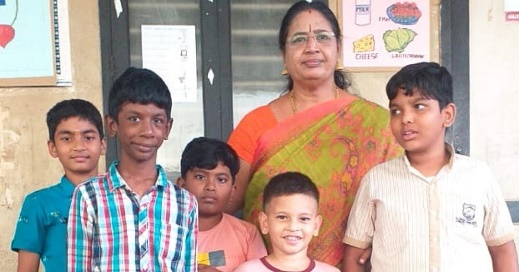
Quote: ‘Education is not the filling of a pot but the lighting of a fire.’ –W.B. Yeats
Source:
Share the article
Get Latest Updates on Offers, Event dates, and free Mentorship sessions.

Get in touch with our Expert Academic Counsellors 👋
FAQs
UPSC Daily Current Affairs focuses on learning current events on a daily basis. An aspirant needs to study regular and updated information about current events, news, and relevant topics that are important for UPSC aspirants. It covers national and international affairs, government policies, socio-economic issues, science and technology advancements, and more.
UPSC Daily Current Affairs provides aspirants with a concise and comprehensive overview of the latest happenings and developments across various fields. It helps aspirants stay updated with current affairs and provides them with valuable insights and analysis, which are essential for answering questions in the UPSC examinations. It enhances their knowledge, analytical skills, and ability to connect current affairs with the UPSC syllabus.
UPSC Daily Current Affairs covers a wide range of topics, including politics, economics, science and technology, environment, social issues, governance, international relations, and more. It offers news summaries, in-depth analyses, editorials, opinion pieces, and relevant study materials. It also provides practice questions and quizzes to help aspirants test their understanding of current affairs.
Edukemy's UPSC Daily Current Affairs can be accessed through:
- UPSC Daily Current Affairs can be accessed through Current Affairs tab at the top of the Main Page of Edukemy.
- Edukemy Mobile app: The Daily Current Affairs can also be access through Edukemy Mobile App.
- Social media: Follow Edukemy’s official social media accounts or pages that provide UPSC Daily Current Affairs updates, including Facebook, Twitter, or Telegram channels.


